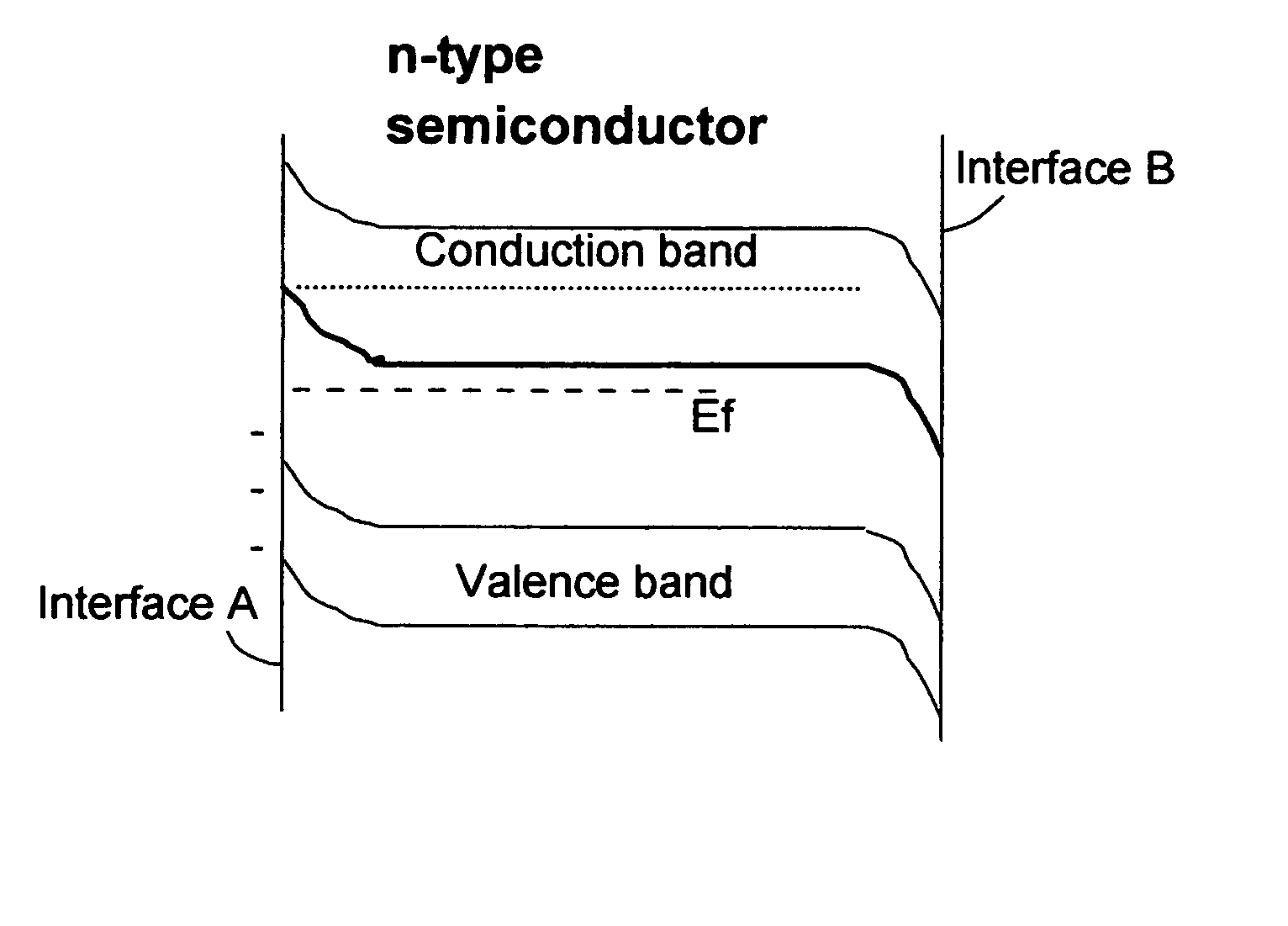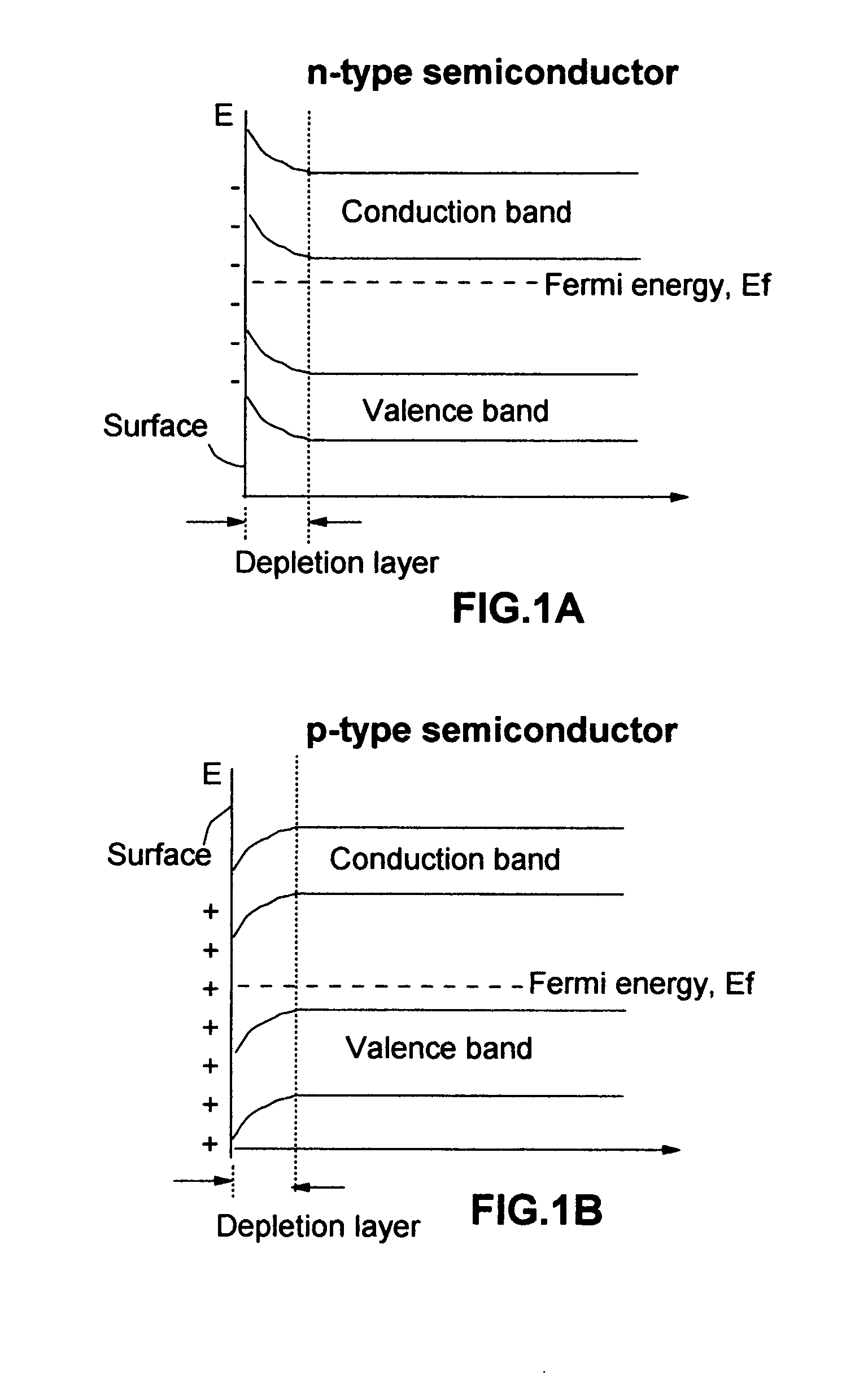Photo-electrolytic catalyst systems and method for hydrogen production from water
a photo-electrolytic and catalyst technology, applied in the field of photo-electrolytic catalyst systems, can solve the problems of insufficient photolysis, inability to readily or effectively optimize, and insufficient efficiency, yield, and rate, so as to facilitate separation of radiation-generated electrons, reduce the probability of charge carrier recombination, and improve the effect of ra
- Summary
- Abstract
- Description
- Claims
- Application Information
AI Technical Summary
Benefits of technology
Problems solved by technology
Method used
Image
Examples
example 1
A micro-crystalline powder of GaP (average particle size≈0.7 μm) was doped with sulfur to produce an n-type semiconductor. A thin layer of platinum (Pt) was sputter-coated over a portion of individual n-GaP particles to serve as a facilitating material. When such a photo-electrolytic catalyst system was suspended in an aqueous solution, hydrogen was evolved.
example 2
Materials similar to those in Example 1 were used, but the average particle size of GaP was slightly below 100 nm. When such a photo-electrolytic catalyst system was suspended in the same aqueous solution, hydrogen was much more vigorously evolved.
example 3
Several samples were prepared for this example. As in Example 2, nano-scaled n-type GaP powder was used, but the facilitating materials were Mn, Fe, Ni, and Co, respectively. When such photo-electrolytic catalyst systems were suspended in the same aqueous solution, hydrogen was vigorously evolved. The solar-to-hydrogen power conversion efficiencies for these samples were found to be in the following order: Mn≈Fe>Ni>Co (as facilitating materials).
PUM
| Property | Measurement | Unit |
|---|---|---|
| Length | aaaaa | aaaaa |
| Band gap | aaaaa | aaaaa |
| Nanoscale particle size | aaaaa | aaaaa |
Abstract
Description
Claims
Application Information
 Login to View More
Login to View More - R&D
- Intellectual Property
- Life Sciences
- Materials
- Tech Scout
- Unparalleled Data Quality
- Higher Quality Content
- 60% Fewer Hallucinations
Browse by: Latest US Patents, China's latest patents, Technical Efficacy Thesaurus, Application Domain, Technology Topic, Popular Technical Reports.
© 2025 PatSnap. All rights reserved.Legal|Privacy policy|Modern Slavery Act Transparency Statement|Sitemap|About US| Contact US: help@patsnap.com



